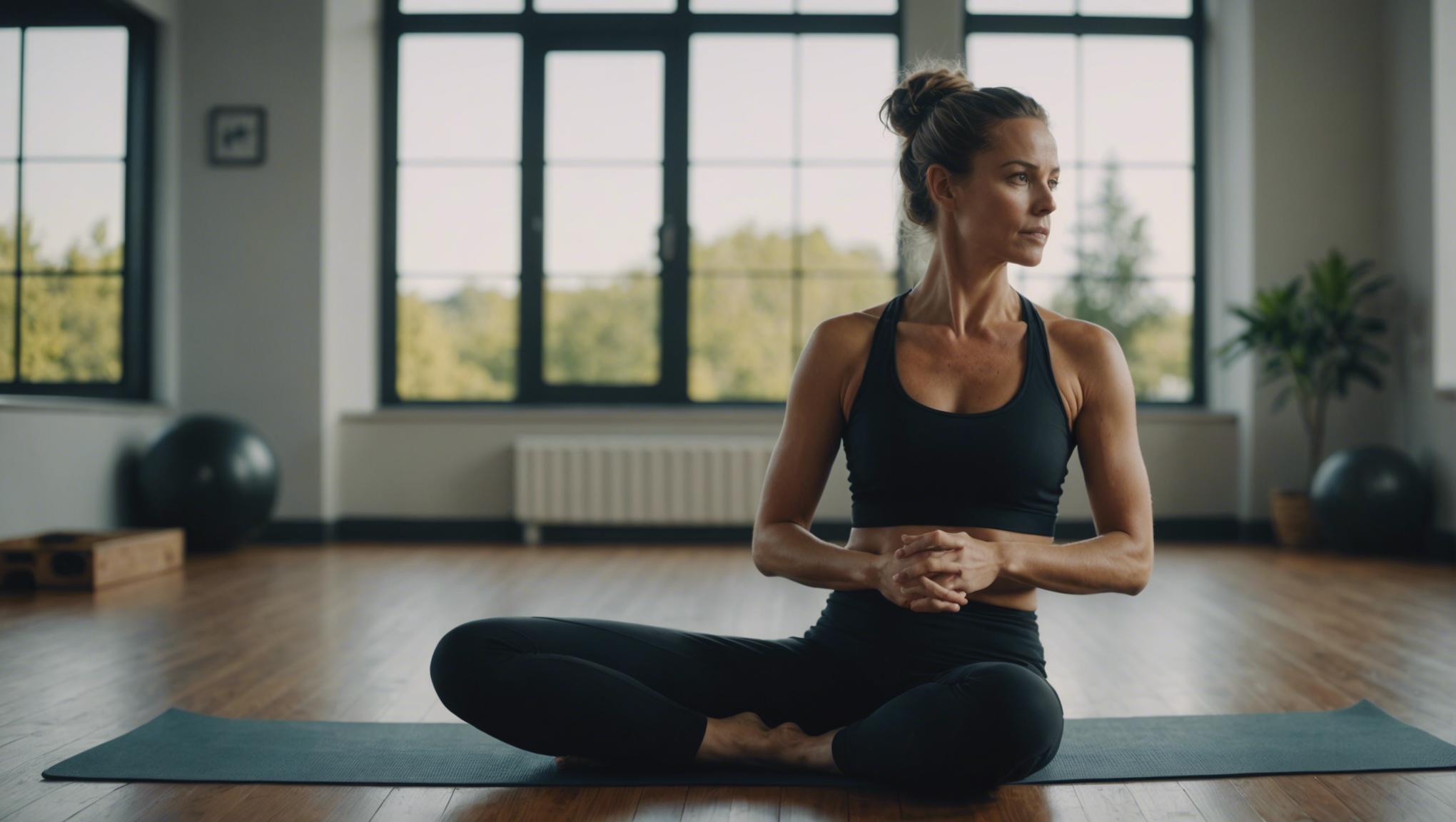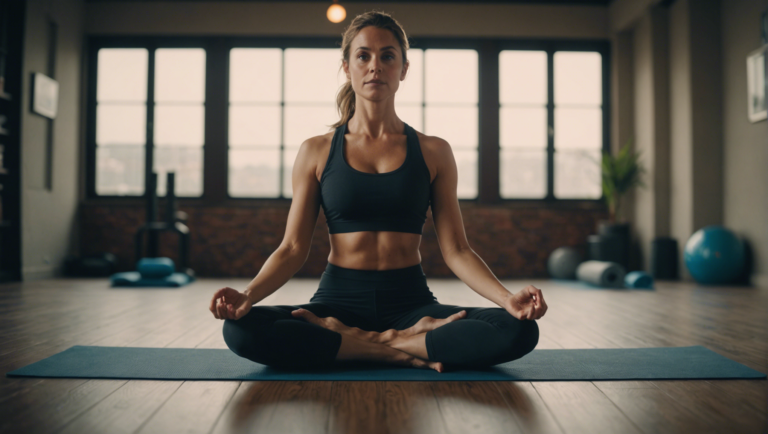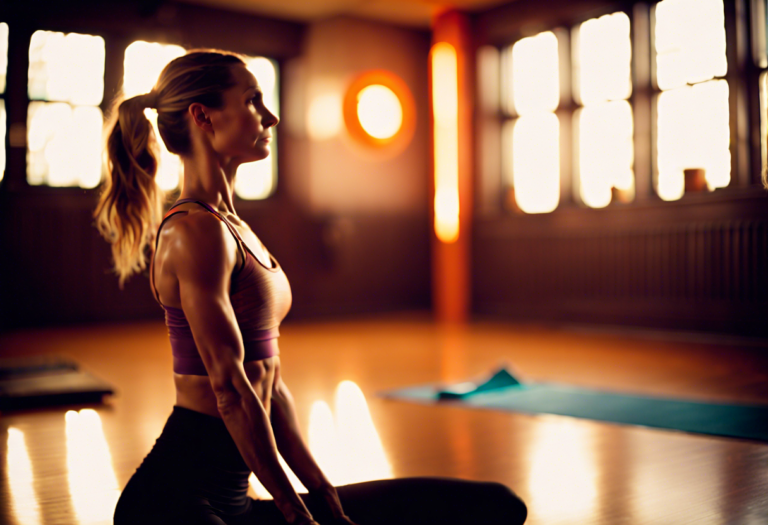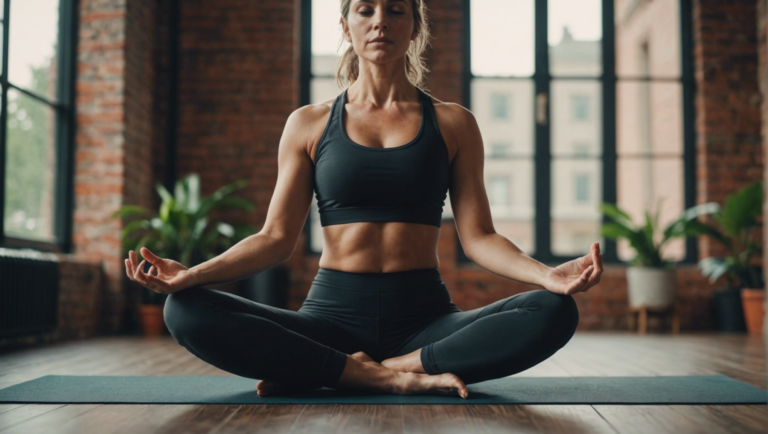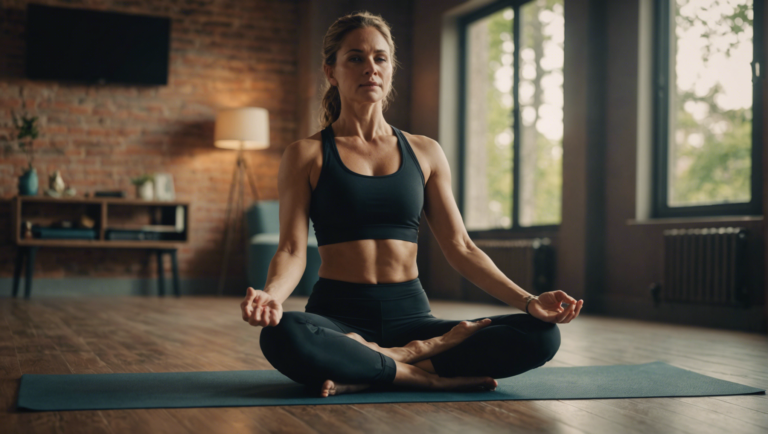Understanding The Differences And Similarities Between Yoga And Pilates
Core Philosophies of Yoga and Pilates: Exploring Their Roots
Core Philosophies: The Essence of Yoga
Yoga, an ancient practice rooting back over 5,000 years in India, is not just a physical exercise but a comprehensive philosophical guide to living. Its foundational texts, including the Yoga Sutras of Patanjali, emphasize the union of mind, body, and spirit. This union is achieved through the Eight Limbs of Yoga, which include ethical disciplines (Yamas), self-disciplines (Niyamas), postures (Asanas), breath control (Pranayama), sensory withdrawal (Pratyahara), concentration (Dharana), meditation (Dhyana), and a state of ecstasy (Samadhi). At its core, Yoga is a spiritual journey, guiding practitioners towards enlightenment, peace, and a deeper connection with the universe.
Pilates: A Modern Approach to Physical Well-being
In contrast, Pilates, developed by Joseph Pilates in the early 20th century, is a physical system designed to strengthen the body, with a particular focus on core strength to improve general fitness and wellbeing. Unlike yoga, Pilates does not inherently integrate spiritual practice but emphasizes the connection between mental and physical health. It is grounded in principles that include concentration, control, centering, flow, precision, and breathing. Pilates is often used as a tool for injury rehabilitation and to promote good posture, offering a more scientific and anatomy-focused approach.
Bridging Mind, Body, and Movement
Both disciplines, though distinct in their origins and primary focuses, share common principles that underline the importance of mindful movement and the connection between mind and body. They both prioritize breathwork as essential to their practices, though for different reasons. In yoga, breath control is a vehicle for achieving spiritual enlightenment, while in Pilates, it’s used to enhance the precision and effectiveness of the movement, aiming at physical conditioning.
The Path Towards Inner and Outer Strength
The journey through Yoga or Pilates—or for many, a combination of the two—offers unique benefits and insights into the self and the universal. Yoga’s approach to embracing life with a calm mind and a compassionate heart mirrors the philosophical underpinning of seeking balance and unity. Pilates, with its emphasis on physical strength and stability, particularly the powerhouse or core, also inadvertently affects mental resilience and clarity, demonstrating how strengthening the body can serve as a foundation for emotional and mental health.
Exploring Their Complementary Nature
Despite their different paths, integrating the practices of Yoga and Pilates can lead to a more holistic approach to health and wellness. The physical discipline of Pilates can enhance the strength and stability needed for more advanced yoga poses, while the meditative and philosophical aspects of Yoga can deepen the mindfulness and intentionality within Pilates practice. Together, they offer a comprehensive approach to wellness that can accommodate a wide range of personal goals, from physical health and rehabilitation to spiritual awakening and peace.
The Seamless Integration of Tradition with Modernity
The beauty of both Yoga and Pilates lies in their adaptability across cultures and epochs, serving timeless needs of human health, happiness, and holistic well-being. In the modern world, where stress and physical inactivity often prevail, these practices stand as testaments to the enduring power of integrating mind, body, and spirit—or movement and mindfulness—in pursuit of a balanced life. Through their foundational philosophies and evolving practices, Yoga and Pilates continue to guide individuals on their personal journeys towards physical health, mental clarity, and spiritual peace.
The exploration of the core philosophies of Yoga and Pilates reveals a rich tapestry of historical depth, practical wisdom, and profound respect for the interconnectedness of mind, body, and spirit. While their methods and objectives might differ, the root of both practices is a commitment to enhancing human well-being, offering diverse paths that lead toward a unified goal of holistic health. By valuing and integrating these principles into daily life, individuals can navigate the complexities of modern existence with equilibrium and grace, benefiting from the ancient wisdom and modern insights that these practices embody.
Physical Benefits: Comparing Flexibility, Strength, and Posture Enhancements
Understanding the Differences and Similarities Between Yoga and Pilates
When embarking on a journey towards improving physical health, two disciplines often come to mind: yoga and Pilates. Both practices have garnered substantial followings worldwide, owing to their effectiveness in enhancing flexibility, strength, and posture. However, discerning the nuances between the two, as well as their distinct benefits, can empower individuals to choose the path that best aligns with their fitness goals.
Flexibility Enhancements: Yoga’s Ancient Wisdom vs. Pilates’ Contemporary Approach
Yoga, with its roots in ancient India, offers a holistic approach to physical and mental well-being. Practitioners of yoga experience a significant improvement in flexibility due to its vast array of poses that stretch and elongate the muscles. The practice emphasizes holding positions for extended periods, which facilitates a deeper stretch and enhances flexibility over time. This not only aids in achieving a greater range of motion but also plays a crucial role in injury prevention.
Pilates, on the other hand, was developed in the early 20th century by Joseph Pilates as a method of rehabilitation and strengthening. While it also promotes flexibility, the approach is more focused on controlled movements that target specific muscle groups. The incorporation of equipment like reformers in Pilates can further intensify the stretch, albeit in a more controlled and resistance-based manner than yoga. Thus, while both disciplines enhance flexibility, the method and extent of emphasis differ.
Strength Building: Core Emphasis and Beyond
Yoga’s power lies in using one’s body weight as resistance, which can lead to profound strength building. Particular styles of yoga, such as Ashtanga or Power Yoga, are more dynamic and physically demanding, focusing on building muscular strength across the body, with particular emphasis on the core. This is achieved through poses that require sustained muscle engagement, such as planks, warriors, and inversions.
Pilates is renowned for its core-centric approach to strength building. The practice is specifically designed to strengthen the "powerhouse" of the body—the abdominals, lower back, hips, and buttocks. Through precise, controlled movements, Pilates engages the deeper core muscles, leading to improved strength in these areas. The use of Pilates machines can also add resistance, further challenging the muscles and enhancing strength.
Posture and Alignment: A Synergy of Benefits
One of the most profound benefits shared by both yoga and Pilates is the improvement in posture and spinal alignment. Yoga’s diverse poses encourage the alignment of the body, promoting better posture. The balance and flexibility gained from consistent practice help in correcting posture defects over time. Furthermore, the mindfulness aspect of yoga teaches awareness of the body, allowing practitioners to notice and adjust their posture throughout the day.
Pilates similarly focuses on alignment but with a more clinical approach. The principles of Pilates include precise movements that train the body to maintain optimal alignment. This methodical approach not only helps in correcting posture but also in alleviating back pain and other posture-related issues by strengthening the supportive muscles around the spine.
Choosing Between Yoga and Pilates: Tailoring to Individual Needs
The choice between yoga and Pilates often boils down to individual preferences and goals. For those seeking a practice that offers not just physical but also mental and spiritual benefits, yoga might be the more appealing option. It provides stress relief, flexibility, and strength, along with a sense of inner peace.
For individuals focused on core strength, posture correction, and precise muscular control, Pilates can offer a more targeted approach. It’s particularly beneficial for rehabilitation, improving posture, and building core strength.
Both yoga and Pilates offer unique advantages for enhancing flexibility, strength, and posture. Understanding the differences and similarities between these two practices can guide individuals towards making an informed choice that aligns with their physical health goals. Ultimately, incorporating either or both disciplines into one’s fitness regimen can lead to significant improvements in overall physical well-being.
Mental and Emotional Well-being: The Mind-Body Connection in Yoga and Pilates
The contemporary wellness landscape showcases an increased awareness towards holistic practices that cater to both physical and mental well-being. Among these practices, Yoga and Pilates emerge as front-runners, offering unique pathways to fostering the mind-body connection. Understanding how each discipline contributes to mental and emotional well-being elucidates their roles in a comprehensive wellness routine.
The Essence of Yoga for Mental Health
Yoga, an ancient practice with its roots in the spiritual traditions of India, extends beyond physical postures (asanas) to include breath control (pranayama), meditation (dhyana), and ethical precepts. The harmonious synergy of these elements aims to cultivate a serene mind, a grounded sense of self, and an awakened spirituality. Research underscores yoga’s effectiveness in reducing stress, anxiety, and depression, attributing these benefits to its meditative aspects which promote mindfulness and present-centeredness.
Yoga’s approach to emotional well-being is deeply intertwined with its philosophy of unity and balance. The practice encourages introspection and a non-judgmental awareness of one’s thoughts and feelings, fostering emotional resilience. Regular yoga practitioners often report an enhanced ability to manage stress and emotional upheavals with greater equanimity.
Pilates: Strengthening Body and Mind
Pilates, on the other hand, is a relatively modern exercise system developed by Joseph Pilates in the early 20th century, focusing on strength, flexibility, and mindful movement. While its primary focus is on core strength, postural alignment, and muscle balance, the mental benefits of Pilates are substantial.
The concentration, precision, and controlled breathing integral to Pilates practice support mental clarity and focus. As practitioners navigate the physical challenges of Pilates exercises, they cultivate a mindful engagement with their bodies, leading to a state of flow—a mental state where a person is fully absorbed in an activity, enhancing emotional well-being.
Pilates also plays a crucial role in developing body awareness and self-image. The emphasis on alignment and form encourages a positive relationship with the body, which can be particularly beneficial for individuals navigating body image issues.
Synergies and Complementarities
Despite their distinct origins and methodologies, Yoga and Pilates share common ground in promoting mental and emotional health through the enhancement of the mind-body connection. Both disciplines offer a refuge from the stresses of daily life, providing a space for individuals to engage with their inner selves.
Integrating both Yoga and Pilates into a wellness regime can be particularly advantageous. Where Yoga offers a broad spiritual framework and fosters emotional resilience, Pilates strengthens the body and encourages a disciplined, focused mindset. This holistic approach ensures a comprehensive engagement with the facets of mental and emotional well-being.
Navigating the Journey
For individuals seeking to enhance their mental and emotional well-being through physical practice, choosing between Yoga and Pilates—or integrating both—depends on personal goals, preferences, and needs. Engaging with a qualified instructor who can tailor practices to individual requirements can further enhance the benefits.
The Scientific Perspective
The proliferation of scientific studies examining the benefits of Yoga and Pilates underscores the growing recognition of their importance in mental health strategies. Evidence-based practices grounded in rigorous research not only validate personal experiences but can also guide practitioners in optimizing the therapeutic aspects of these disciplines.
Embracing Mind-Body Wellness
At the heart of both Yoga and Pilates is the recognition of the inseparable link between the physical and the mental, and the potent ways in which this connection can be harnessed to promote overall well-being. Whether through the meditative flow of Yoga or the disciplined precision of Pilates, engaging with these practices offers a pathway to cultivating a balanced, harmonious self.
By elevating awareness, fostering resilience, and reinforcing a positive self-image, Yoga and Pilates stand as vital components of a holistic approach to mental and emotional well-being. As we navigate the complexities of modern life, these practices remind us of the strength and tranquility that reside within, accessible through the transformative power of the mind-body connection.
Equipment and Space: Understanding the Practical Needs for Practice
Embarking on a journey of physical wellness, particularly through practices like yoga and Pilates, not only requires dedication and commitment but also an understanding of the practical aspects of these exercises. At the core of these practices are the equipment and space requirements, which, though often understated, play a significant role in the effectiveness and enjoyment of your workouts.
Equipment Essentials: A Close Look
When delving into the necessities for yoga and Pilates, one finds both commonalities and distinctions. A yoga mat is fundamental for both, serving as your personal space and providing the cushioning and grip needed for various poses and exercises. Its importance cannot be overstated, as it offers the stability required for balance poses in yoga and serves as a barrier between you and the hard floor in Pilates.
For Pilates, especially those engaging in Reformer Pilates, the equipment becomes more specialized and elaborate. The Reformer, a bed-like frame with a sliding carriage and springs for resistance, is central to many Pilates exercises. This apparatus facilitates a wide range of movements and can be adjusted for different levels of difficulty, making it a versatile tool for enhancing strength, flexibility, and coordination.
Beyond the Reformer, Pilates practitioners might find themselves using a variety of tools like the Pilates ball, resistance bands, and Pilates rings. Each of these aids in increasing the challenge of the workout, targeting specific muscle groups, and adding variety to the practice.
Yoga, while less reliant on equipment, does benefit from the use of props such as blocks and straps. These assist in achieving the correct alignment, providing support in various poses, and making certain positions more accessible to beginners or those with limited flexibility.
Space Requirements: More Than Just Room to Move
The spatial aspect of practicing yoga and Pilates encompasses more than just ensuring you have enough room to extend your limbs fully. The ambiance of your practice area significantly impacts your focus, relaxation, and overall experience.
For yoga, creating a serene, clutter-free environment helps in fostering an atmosphere of peace and mindfulness, aiding in deeper immersion into the practice. Natural light, ventilation, and a quiet setting contribute to a conducive yoga environment, enhancing the meditative aspects of the practice.
Pilates sessions, particularly when involving equipment like the Reformer, necessitate a more structured space. Adequate room not only for the equipment itself but also for moving around safely is critical. The setting for Pilates, while also benefiting from being clutter-free and well-ventilated, tends to be more pragmatic, focusing on the functionality needed to accommodate the physical dynamics of the exercises.
When practicing at home, transforming a section of your living space into a dedicated area for yoga or Pilates can significantly improve your consistency and progress. This doesn’t necessarily mean you need a large house or a designated studio. Even a small, defined area that is organized, inviting, and free from distractions can serve as your personal retreat for practice.
Making the Most of Your Practice
Ultimately, the effectiveness of yoga and Pilates goes beyond the physical postures and exercises. It’s about creating a personal experience that enriches both mind and body. Investing in the right equipment and dedicating a suitable space for your practice are pivotal in achieving this. Whether you’re a beginner embarking on a new fitness journey or a seasoned practitioner deepening your practice, recognizing and fulfilling these practical needs can significantly enhance your experience and outcomes.
Embracing the principles of mindfulness in yoga and the precision in Pilates extends to how we set up our practice environments. By giving thought to the equipment and space, we not only enhance our physical engagement with these disciplines but also deepen the overall wellness experience, cultivating habits and practices that sustain our mental, emotional, and physical well-being.
Integrating Yoga and Pilates into Daily Life: Strategies for Beginners and Advanced Practitioners
Integrating Yoga and Pilates into one’s daily life offers a harmonious blend of mind-body exercises that cater to both beginners and advanced practitioners. These two practices, each with its unique principles and benefits, can significantly enhance physical health, mental clarity, and overall well-being. Below are strategies tailored to seamlessly weave Yoga and Pilates into everyday routines, ensuring a balanced and holistic approach to fitness and self-care.
Strategies for Beginners: Embarking on Your Journey
Starting Small and Building a Routine
Embarking on the path of Yoga and Pilates doesn’t require grand gestures or immediate proficiency. Begin by setting aside just 10-15 minutes each day for practice. Early mornings can be an ideal time, offering a serene environment to connect with oneself before the day’s demands kick in. Alternatively, evening sessions can serve as a tranquil closure to the day, aiding in stress release and relaxation.
Choosing the Right Resources
For beginners, the vast array of online tutorials, apps, and classes can be overwhelming. Seek out beginner-friendly resources that focus on foundational poses and techniques in both Yoga and Pilates. It’s important to start with the basics to build a strong foundation and prevent injuries. Resources that offer clear, step-by-step instructions and emphasize proper form should be prioritized.
Listening to Your Body
One of the core principles shared by both Yoga and Pilates is mindfulness and body awareness. As a beginner, it’s crucial to listen to your body and respect its limits. If a pose or exercise feels uncomfortable, modify it or take a break. This approach not only ensures safety but also deepens the connection between mind and body.
Strategies for Advanced Practitioners: Deepening Your Practice
Integrating Props and Advanced Techniques
For those with a solid foundation in Yoga and Pilates, incorporating props such as blocks, straps, and Pilates balls can add challenge and variety to the practice. Advanced techniques, such as power Yoga and reformer Pilates, offer intensified workouts that can further enhance strength, flexibility, and endurance.
Setting Personal Goals and Exploring Variations
Advanced practitioners benefit from setting specific, measurable goals for their practice. Whether it’s mastering a complex asana or achieving a new level of core strength in Pilates, goals provide direction and motivation. Exploring variations of familiar poses and exercises can also renew interest and challenge the body in new ways.
Joining Workshops and Retreats
Participating in workshops and retreats provides opportunities for advanced practitioners to learn from experienced instructors and engage with the Yoga and Pilates community. These experiences often offer deeper insights into the philosophies behind the practices, advanced techniques, and personalized feedback to refine one’s practice.
Balancing Yoga and Pilates: A Holistic Approach
Creating a Complementary Schedule
Achieving balance between Yoga and Pilates involves thoughtful scheduling. One approach is alternating days between the two practices, allowing the body to reap the benefits of both modalities. Some may prefer dedicating specific days of the week to each practice, depending on personal goals and schedules.
Focusing on Synergy Rather Than Separation
Rather than viewing Yoga and Pilates as separate entities, consider them as complementary parts of a holistic wellness routine. Yoga emphasizes flexibility, balance, and mental well-being, while Pilates focuses on strength, particularly in the core, and precision in movement. Together, they offer a comprehensive approach to health that addresses the body and mind.
Embracing Adaptability and Mindfulness
Both Yoga and Pilates teach the importance of adaptability and mindfulness, not only within the practices themselves but also in daily life. Integrating these principles into everyday activities can enhance quality of life, promote resilience, and encourage a mindful presence in the moment.
Yoga and Pilates into daily life, whether as a novice or an experienced practitioner, offers a journey toward enhanced health, vitality, and mindfulness. Through tailored strategies that respect individual needs and progress, this integrated approach facilitates a balanced and fulfilling path to personal wellness.
Conclusion
Navigating through the nuanced landscapes of Yoga and Pilates offers a rich tapestry of benefits, philosophies, and practices that cater to the holistic development of an individual. The exploration of their core philosophies unveils a fascinating divergence in origins and ultimate goals, yet a shared acknowledgment of the mind-body connection. Yoga, with its roots deeply embedded in ancient spiritual tradition, aims at achieving enlightenment and unity of mind, body, and spirit. Pilates, conceived in the early 20th century by Joseph Pilates, is designed with a more physical focus aimed at strengthening the body, enhancing flexibility, and promoting efficient movement. Despite these foundational differences, both practices underscore the importance of breath work and the awareness of bodily alignment, serving as complementary rather than conflicting disciplines.
When considering the physical benefits, it becomes evident that Yoga and Pilates, while different in approach and technique, offer substantial improvements in flexibility, strength, and posture. Yoga, through its varied poses (asanas) and emphasis on stretching, can markedly increase flexibility and balance. Pilates, with its focus on core strength, offers a more structured approach to building muscle and improving posture. The fusion of flexibility from Yoga and strength from Pilates cultivates a body that is not only more resilient but also more harmoniously balanced.
The mental and emotional well-being engendered by both disciplines cannot be overstated. The stress-reducing capabilities of Yoga are well-documented, providing a sanctuary for the mind through meditation, controlled breathing, and a philosophy that preaches detachment and mindfulness. Pilates, while less overtly spiritual, still engages the mind in a form of moving meditation, where the precision of movement and concentration clears the mind and fosters a state of mental clarity and calm. This mind-body synergy cultivated by both practices underscores the undeniable truth that our mental and emotional states are intrinsically linked to our physical well-being.
Delving into the practicalities of equipment and space needed for practice, it becomes clear that both Yoga and Pilates are remarkably adaptable and can be tailored to individual needs and circumstances. Yoga’s simplicity and adaptability mean that it can be practiced almost anywhere with minimal equipment—a mat suffices in most cases. Pilates, traditionally requiring specialized equipment like the Reformer, Cadillac, and Wunda Chair, has evolved with mat-based exercises that lower the barrier to entry, making it accessible to those who prefer to practice in the comfort of their home or in limited spaces.
Integrating Yoga and Pilates into daily life emerges not just as a possibility but as a transformative lifestyle choice that accommodates a wide spectrum of practitioners, from beginners to advanced. Strategies for incorporation range from dedicated classes and workshops, online tutorials, to shorter, more manageable sessions that fit into busy schedules. The adaptability of both practices ensures that individuals can tailor their approach to fit personal goals, preferences, and lifestyles, making the journey towards enhanced physical and mental well-being an inclusive and achievable pursuit.
The confluence of Yoga and Pilates presents a holistic path that encompasses the physical, mental, and emotional dimensions of health. By acknowledging their differences and leveraging their complementary strengths, practitioners are empowered to create a well-rounded, flexible fitness and wellness regimen that addresses the complex needs of the human body and spirit. The intentional integration of Yoga and Pilates into one’s life promises not just a more balanced and healthy body, but also a more peaceful and resilient mind. In the end, the decision to embrace these disciplines is not about choosing one over the other; it’s about recognizing and adopting a more integrated approach to personal health and well-being—a journey that is both enriching and transformative.
